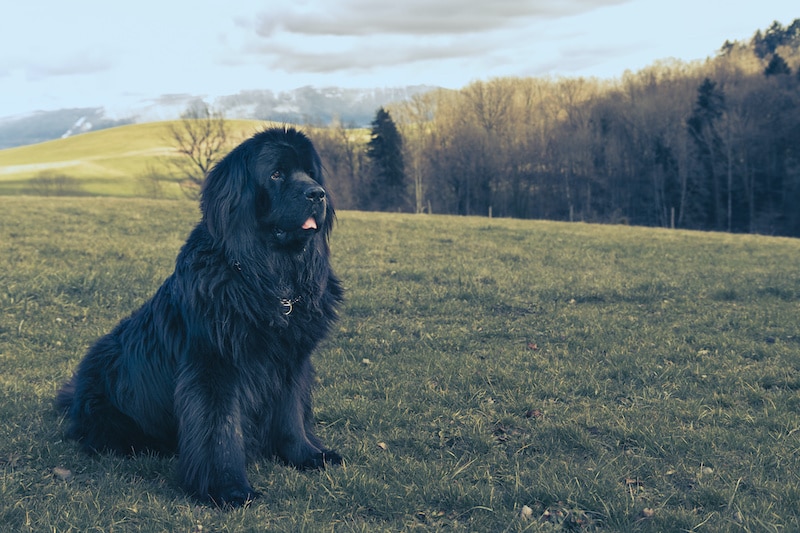When do Newfoundland Dog shed
Introduction
The Newfoundland is a very large and loyal dog that originated in Canada, but has since become popular around the world. The Newfoundland has a soft and thick double coat that comes in black or brown with possible white markings on toes, chest, and tip of the tail. The Newfoundland puppies will shed their puppy coats when they reach the age of around 10 to 18 months old. The shed periods are called the period of molting. A Newfoundland will go through various periods of heavy molts a year
The Newfoundland dog is a very large, loyal and hardworking dog.
The Newfoundland dog is a very large, loyal and hardworking dog.
It can be used as a working dog, a guard dog and even a therapy dog. The Newfoundland is known for its loyalty and devotion to its owners. For example, you may have seen the movie “Water for Elephants” where Rosie the elephant took care of Jacob Jankowski throughout his time at the circus after he had an accident on his way to joining it. Well this type of thing goes on with Newfoundlands too! They just love their owners so much that they will do anything they ask of them without complaint or hesitation!
The Newfoundland has a soft and thick double coat that comes in black or brown with possible white markings on toes, chest, and tip of the tail.
The Newfoundland has a soft and thick double coat that comes in black or brown with possible white markings on toes, chest, and tip of the tail. The dog has an outer coat that is glossy, water-resistant and coarse to the touch, and an undercoat that’s soft and dense.
Newfoundland dogs shed twice a year; once in spring around March-April when they shed the old undercoat and then again in autumn from September to November when they lose their top coat as well as all the dead hair from underneath this second layer. In addition to shedding twice per year Newforlands also tend to shed more than other dog breeds because of their long coats.
Newfoundland puppies will shed their puppy coats when they reach the age of around 10 to 18 months old.
If you’re wondering when will my Newfoundland puppy shed his puppy coat, then you’ve come to the right place! You can tell if your Newfoundland has shed his or her puppy coat by looking at the color of their hair. If it’s fluffy, cute, and white like cotton candy, then they are still in their puppy coat. However, if it’s long and curly and golden brown like a mop head that hasn’t been washed in weeks…well then they’re well on their way to growing into an adult dog!
Newfoundland puppies will shed their puppy coats when they reach the age of around 10 to 18 months old. They’ll also have a lot more energy during this stage because they’re growing so fast!
The shed periods are called the period of molting.
The shedding period is called the molting period. It’s when your Newfoundland Dog loses its coat, and it happens twice a year. This can be confusing because we also say “shedding,” but this is just another way of saying “losing.”
When do Newfoundland Dogs shed?
The first molt typically occurs in January or February. Then, after six months or so, they shed again in June or July.
A Newfoundland will go through various periods of heavy molts a year.
The Newfoundland dog has a double coat, which means that they have an undercoat and an outer coat. The soft, short undercoat is covered by a longer, coarser outer coat. Therefore, when the Newfoundland sheds it is not as important to remove the entire top layer of fur because there will be an abundance of fur underneath to keep your dog warm.
The Newfoundland goes through various periods of heavy molts a year. These periods are called “blow outs” and occur in spring or fall depending on where you live in North America (Newfoundland dogs shed heavily during molting season).
When a Newfoundland dog reaches around 4 years old, he is said to be approaching his prime shedding period.
The prime shedding period is when a Newfoundland dog reaches around 4 years old, he is said to be approaching his prime shedding period. This is the time of year when they shed the most and lose more hair than usual. If you have a newfie that has not reached this point yet, don’t worry—you can still experience this wonderful phenomenon! During this time of year, your beloved pup will start to shed faster than before and may even shed more often than usual.
Newfoundland dogs have two heavy molting periods during the year.
Newfoundland dogs have two heavy molting periods during the year. The first occurs in spring, when they lose all of their winter coat and grow a new one. The second happens in fall, when they shed again to prepare for winter.
These cycles are perfectly normal and are the result of a hormone called testosterone (commonly called “male hormones”). As you might expect, this hormone is responsible for many secondary sexual characteristics like facial hair growth on males and breast growth on females; it also causes Newfoundland dogs to molt twice every year!
Conclusion
So, the next time you see your Newfoundland dog shedding, don’t panic. It is completely normal and it is something that all dogs go through on a regular basis.

